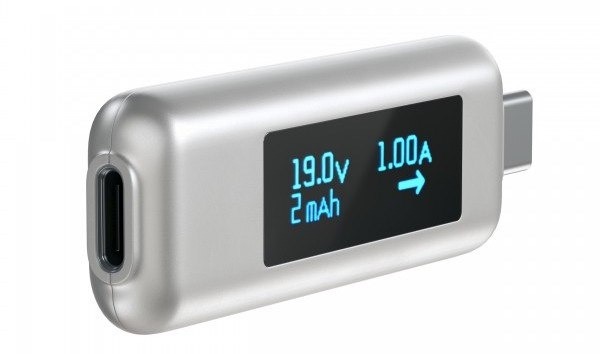Satechi's USB-C Power Meter Tries To Make Sense Of The Type-C Mess
USB Type-C may have promised to solve our cable confusion forever, but uncertainty about charging voltages and safe power delivery have left even fans of the reversible connection scratching their heads. The connector – which is used both for USB 3.1 and Thunderbolt 3, lending its own uncertainty to the mix – is notable because it can be used to deliver sufficient power to recharge a laptop, while simultaneously carrying data and even video at the same time. Unfortunately that flexibility has turned shopping for USB-C accessories into something of a minefield.
That's because the broad range of voltages, amperages, and mAh outputs supplied and required by various different chargers, accessories, laptops, and other devices can range considerably. At the one extreme, you have power-sipping accessories like headsets that use USB-C; at the other, Apple's latest MacBook Pro with Touch Bar uses the port. In the middle you have a growing number of smartphones with varying levels of quick-charge support.

On the one hand, connecting a high-draw device to a low-power charger could mean your gadget charges more slowly than usual; or, indeed, that it doesn't charge at all. Worse, though, would be plugging a high-power charger into a low-draw device, and potentially overloading it. The USB Type-C standard does include power management protection, but the flood of cheap accessories and the rush to lower price points has seen some skimp on those safety elements.
Even if all the safety boxes are ticked, USB-C's broad range of power support can still be confusing. Five levels – or "profiles" – are currently supported, ranging from 10W to 100W. Figuring out which is being required or delivered can be tricky without a magnifying glass.
Into the fray steps accessory company Satechi, with its Type-C Power Meter. Effectively an in-line dongle with a display, the gadget is connected in-between two USB-C devices – such as a charger and your MacBook Pro – and gives a reading of volts, amps, and mAh from whatever is hooked up. It'll also keep track of how much power has been transferred while it has been connected.
At $29.99 it's certainly a cheap way to keep track of how fast things are charging and whether you could do better by opting for a higher-power supply. All the same, it's somewhat frustrating that such a gadget would even be considered necessary: USB-C was, of course, intended to simplify matters by cutting cables down to just one, but that has turned out to not quite be the case. Still, if you want to make absolute sure that it's safe (and efficient) to charge, it could be a useful addition to your bag.
MORE Satechi
